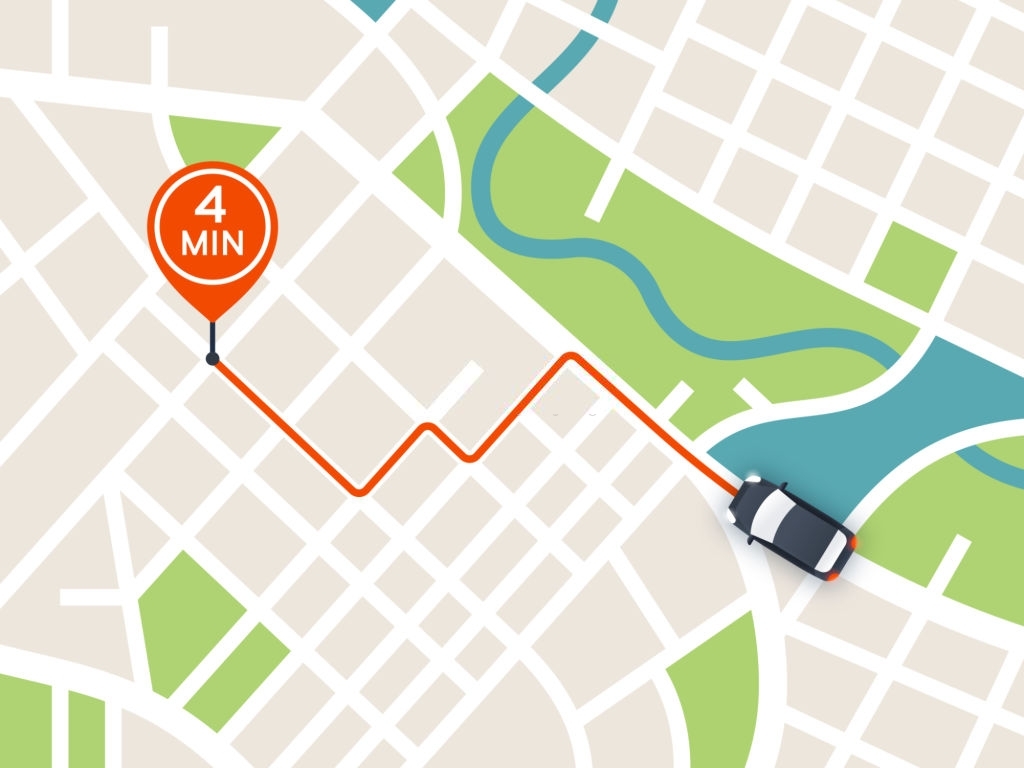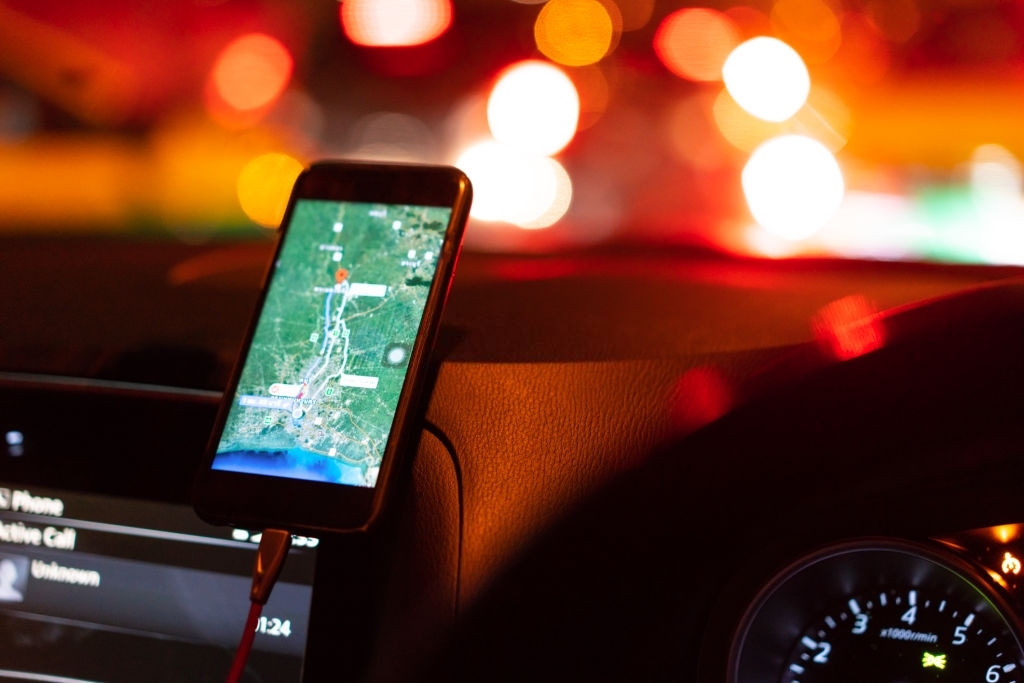The Global Positioning System ( GPS) is a global radio navigation system formed by the constellation of 24 satellites and their ground stations. Tracking the Global Positioning System is a way of working out exactly where there is something. For example, a GPS tracking system can be placed in a vehicle, on a cell phone or on special GPS devices that can be either fixed or portable to track what county am i in. GPS works by providing accurate location information. It can also track the movements of a vehicle or a person. For example, a GPS tracking system can be used by a company to monitor the route and progress of a delivery truck and by parents to check the location of their child.

Auto city navigation map abstract background.
The Global Navigation Satellite System (GNSS) is used in a GPS tracking system to find where am i right now. The network includes a series of microwave-borne satellites that transmit information on position, distance , time and direction through GPS devices. A GPS tracking device can therefore provide both historical and accurate data for any journey in real time.
GPS provides the recipient with special satellite signals. These GPS receivers can also calculate speed and time, not only monitor the exact location. For four GPS satellite signals, locations can also be measured in three-dimensional views. There are 27 Earth orbiting GPS satellites in the space region of the Global Positioning System. There are 24 operational and 3 additional satellites (if one fails) which travel around the earth every 12 hours and transmit radio signals from space to the GPS receiver.
The Positioning System is controlled by various tracking stations all over the world. The monitoring systems help to track signals that continuously orbit the Earth from GPS satellites. Space vehicles transmit carrier signals to a microwave. GPS receivers converts those satellite signals to the users of the Global Positioning Systems to estimate the actual position, speed , and time.
The device operation is based on a basic mathematical concept known as trilateration. Two types include trilateration: 2-D trilateration and 3-D trilateration. The GPS receiver needs to learn two things in order to perform a basic mathematical calculation. First it must be understood where at least three satellites above the position should be located. Secondly, the distance from each of the space vehicles must be known. Units with several receivers which collect signals simultaneously from multiple GPS satellites. Such radio waves are electromagnetic energy traveling at light speed.
A GPS system for monitoring can work in various ways. From a commercial point of view, vehicles’ position on their journeys are usually measured with GPS devices. Some of these systems will save the data in the GPS tracking system itself and some will send the information regularly (so called active tracking) or two-way GPS to a central database or system via a GPS system modem.

The map on the phone in the background of the dashboard. Black mobile phone with map gps navigation fixed in the mounting. App map for travel.
GPS is important as it lets you figure out what town am i in and where you’re going when you are journeying from one vicinity to another. Navigation and positioning are critical however cumbersome activities, which GPS makes it easier. Once GPS locates your position, after which it starts tracing other factors like speed, bearing, tracks, experience distance, sunrise/sunset time, distance to destination, and several different details. GPS uses ‘man-made’ stars as reference points to calculate positions accurate to a matter of meters.